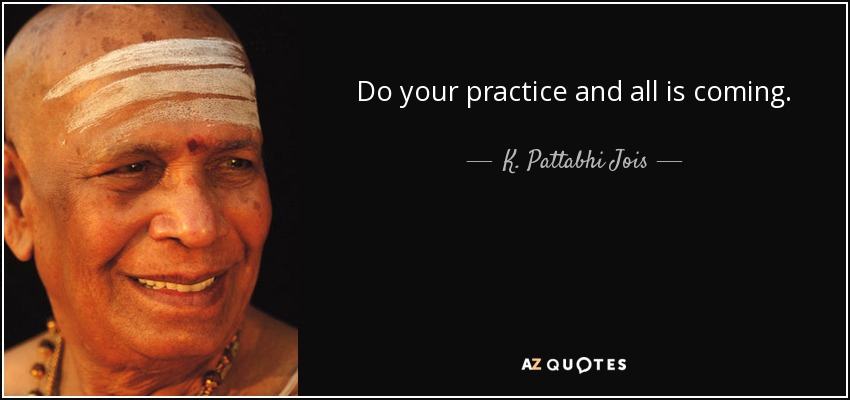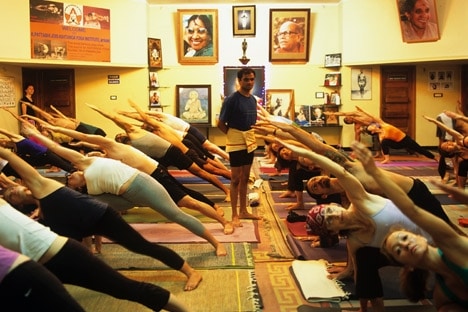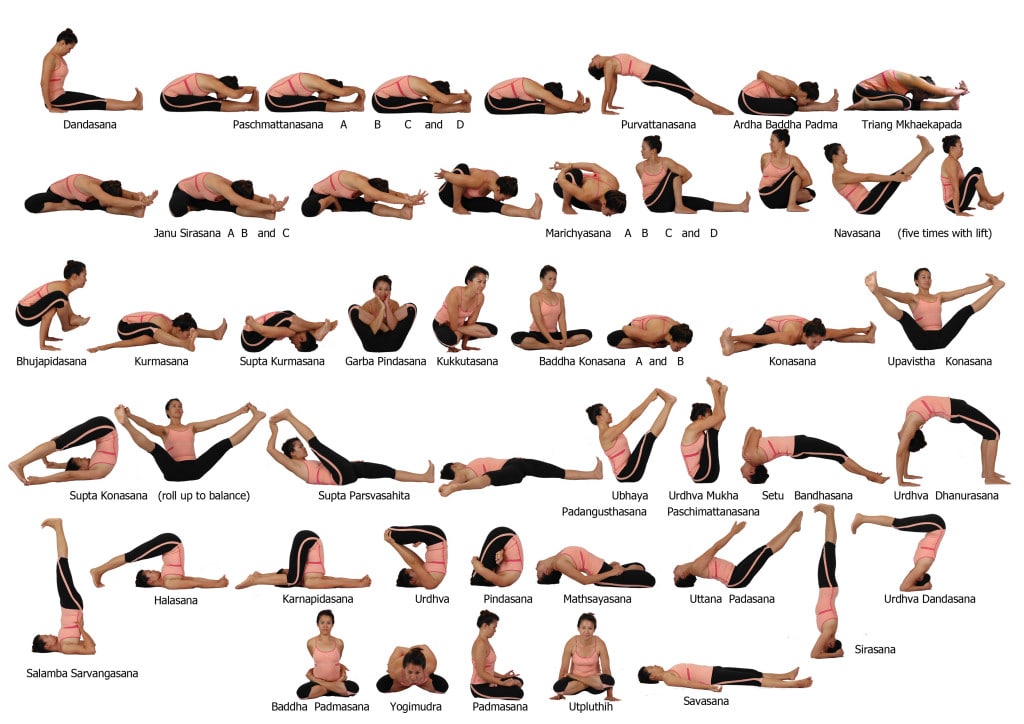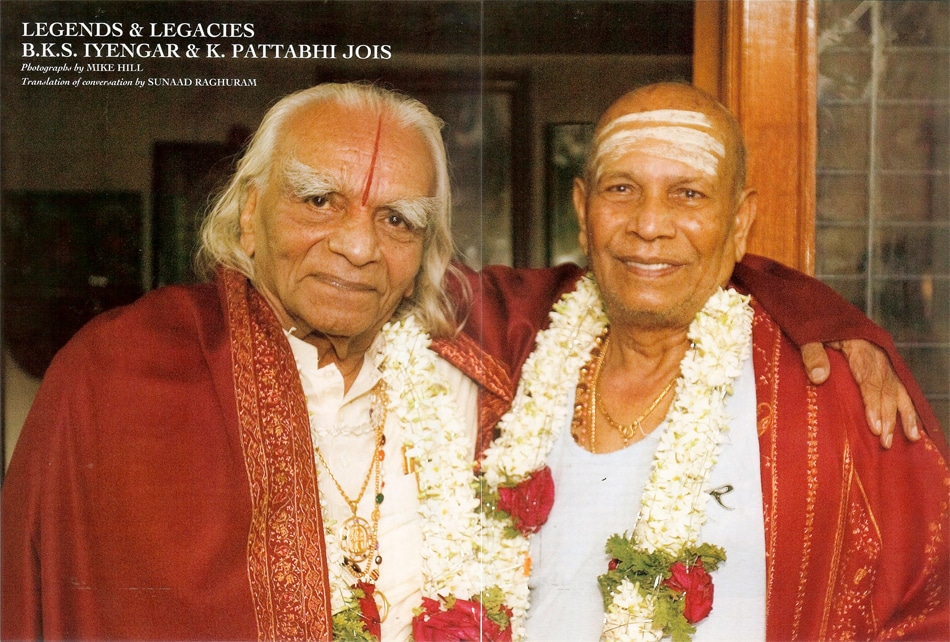(Thai language following English)
Ashtanga Yoga literally means “eight limbs of yoga.”
These limbs are defined in the the second chapter of the Yoga Sutras of Patanjali,
and comprise the foundation of Ashtanga Yoga Philosophy.
The following are the 8 practices or limbs:
1. yama (moral restraints) – how we relate to others
2. niyama (observances) – how we relate to ourselves
3. āsana (posture) – how we relate to our body
4. prāṇāyāma (breath extension) – how we relate to our breath or spirit
5. pratyāhāra (sensory withdrawal) – how we relate to our sense organs
6. dhāraṇā (concentration) – how we relate to our mind
7. dhyāna (meditation) – moving beyond the mind
8. samādhi (meditative absorption) – deep realization and inner union
PHILOSOPHY BEHIND ASHTANGA YOGA
Ashtanga yoga is a practice and philosophy that develops one’s psychological and spiritual health. It has been kept alive for thousands of years from one generation to the next by being passed on through a lineage of teachers. It has not endured by staying fixed in the past, rather it is a living tradition that has maintained its integrity while adjusting to people’s needs and the demands of the time. Ashtanga yoga is not bound to one particular religion, political lineage or any other association. What this tradition does is connect us to the life-force that flows through all beings, and remains grounded in a deep sense of respect for the teachers and the practice itself.
CREATION AND PRACTICE
The practice of Ashtanga Yoga (Ashtanga/Vinyasa Yoga) as established by Sri K. Pattabhi Jois of Mysore, India is a dynamic system that consists of a precise sequence of poses (asana), breath control (ujjayi pranayama), a gazing point (drishti), and internal energetic locks (bandhas). Each pose in the sequence is a preparation for the next, and is traditionally practiced in sequence.
The combination of breath, movement, and focused awareness begins to generate heat (tapas). This heat purifies the senses of perception, (indriyas), and consequently, we begin to be more discriminating in how we feed our senses.
According to Pattabhi Jois, Ashtanga yoga is a path that leads us to our own spirit, to our very nature.
There are two traditional ways in which Ashtanga is taught: in a led class, where the vinyasa system is counted out load, or in a Mysore-style class, with everyone going through the asana series individually, at his or her own pace, under the supervision of the teacher.
Yoga is above all experiential. It is your own experience that will always be your truest and best teacher.
As Pattabhi Jois was fond of saying “99% practice, 1% theory. Do your practice. All is coming!”
แนะนำคร่าวๆ เกี่ยวกับชุดท่าฝึก Ashtanga Vinyasa Yoga, Primary Series
ชุดท่าฝึก Primary Series นั้น เป็นชุดท่าฝึกพื้นฐาน ซึ่งนักเรียนใหม่ที่ลงทะเบียนเข้ามาฝึกที่ KPJAYI.ทุกๆคนจะต้องจดจำให้ได้ และควรจะต้องฝึกให้ได้ครบทุกท่าฝึกในPrimary Series นี้
ชุดท่าฝึก Primary Series ประกอบไปชุดท่าฝึกต่างๆ ดังต่อไปนี้
1. ท่าไหว้พระอาทิตย์ Surya Namaskara A. และ Surya Namaskara B.
2. ท่าชุดฝึกที่เป็นท่ายืน Standing Series (13ท่า)
3. ท่าชุด Primary Series (21ท่า)
4. ท่าโค้งแอ่นหลัง Back Bending (1ท่า)
5. ท่าชุดสำหรับใช้ในการปิดท้ายการฝึก Finishing Sequence (15ท่า)
สรุปรวมท่าฝึกทั้งหมด ประมาณ 50ท่า ซึ่งไม่นับรวม ท่าไหว้พระอาทิตย์ ก็ถือว่าเยอะมากๆเลยล่ะครับ ซึ่งท่าฝึกทั้งหมดนี้ควรจะใช้ระยะเวลาในการฝึกโดยมาตรฐานประมาณ หนึ่งชั่วโมงครึ่งครับ…
การฝึกแบบเต็มรูปแบบก็จะเริ่มต้นตามลำดับขั้นตอน ดังต่อไปนี้
—
post from
www.ashtanga-yoga-victoria.com/eight-limbs-of-yoga.html
ashtangacharlottesville.com/about-us/what-is-ashtanga-yoga/
jimmyhathavinyasayoga.blogspot.com/2013/01/ashtanga-vinyasa-yoga-primary-series.html
-Practice in Mysore India
www.youtube.com/watch?v=aUgtMaAZzW0





